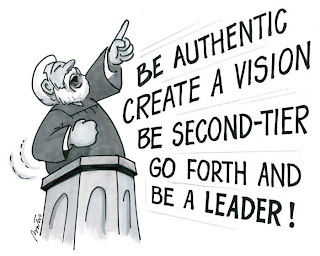From John Baldoni, Harvard Business Press. This is something I find myself coaching leaders on all the time - not just saying something - explaining it. Most people need explanation, backdrop and context in order to engage.
Explanation is a key attribute of leadership communications. Leaders know to inject their communications with verve and enthusiasm as a means of persuasion, but they also need to include an explanation for the excitement. What does it mean and why are we doing it are critical questions that every leader must answer with straightforward explanations. Here are three ways to become an effective explainer.Define what it is. The purpose of an explanation is to describe the issue, the initiative, or the problem. For example, if you are pushing for cost reductions, explain why they are necessary and what they will entail. Put the cost reductions into the context of business operations. Be certain to explicate the benefits.
Define what it isn't. Here is where the leader moves into the "never assume mode." Be clear to define the exclusions. For example, returning to our cost reduction issue, if you are asking for reductions in costs, not people, be explicit. Otherwise employees will assume they are being axed. Leave no room for assumptions. This is not simply true for potential layoffs but for any business issue.
Define what you want people to do. This becomes an opportunity to issue the call for action. Establishing expectations is critical. Cost reductions mean employees will have to do more with less; explain what that will entail in clear and precise terms. Leaders can also use the expectations step as a challenge for people to think and do differently. Your explanation then takes on broader significance.



No comments:
Post a Comment